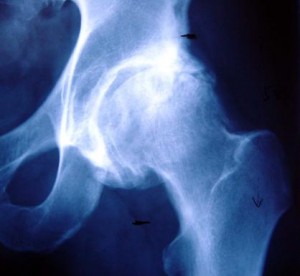In the early stages of osteoarthritis, a patient may be aware merely of discomfort and stiffness in the joint. In these circumstances, physiotherapy can help significantly to maintain mobility. Maintaining mobility can support the ‘nutrition’ of the articular cartilage but also maintains muscle bulk and support around the joint, helping to reduce symptoms, maintaining function and mobility. Beyond that, simple painkillers and anti-inflammatory medication can improve symptoms allowing the patient to continue to function at home, in work and frequently in sports, often to a reasonable level. At the same time, trying to reduce weight and being sensible about activity, particularly activities that result in impact loading of the hip, will help to reduce any limitation.
Some patients have found that articular cartilage supplements, such as glucosamine and chondroitin, can have a beneficial effect but this is far from proven. My own thoughts are that these are unlikely to cause harm. In my opinion, in the early stages of osteoarthritis, taking articular cartilage supplements at suggested doses is an entirely sensible and reasonable course of action.
As the condition progresses, however, a change in activities, particularly reducing activities that ‘impact’ the articular cartilage, such as running and impact sports, will be required to allow the individual to tolerate the symptoms. Cycling and swimming (perhaps avoiding breast stroke) can be acceptable alternatives for those keen to remain active despite hip arthritis.
Unfortunately, as the wear and tear progresses further, this sort of ‘conservative management’ becomes less effective. Pain and stiffness worsens and the patient can start to limp. In these circumstances using a stick as a support and carried on the opposite side might be of help.
As the condition progresses further, the patient can start to experience pain at night, pain at rest, experience difficulty in putting on shoes and socks, climbing stairs, getting in and out of a car and going about their everyday activities. As this worsens, one reaches the limits of conservative management.
It is at that stage, as the symptoms progress and the resulting limitation and associated deformity worsens such that the patient is unable to go about their desired activities, that hip arthroplasty (replacement) surgery of some type might be considered in an attempt to improve symptoms, reducing limitation and returning the patient to an acceptable level of function at home, at work and, as much as possible, ‘at play’.

